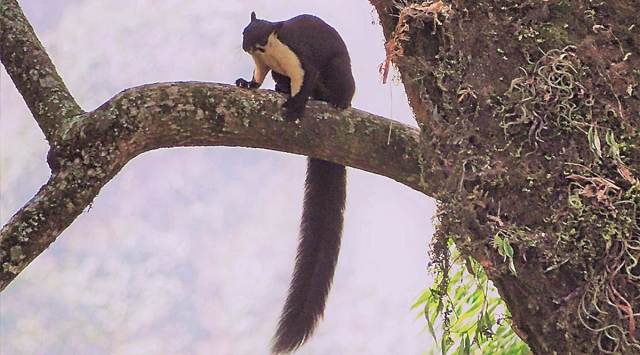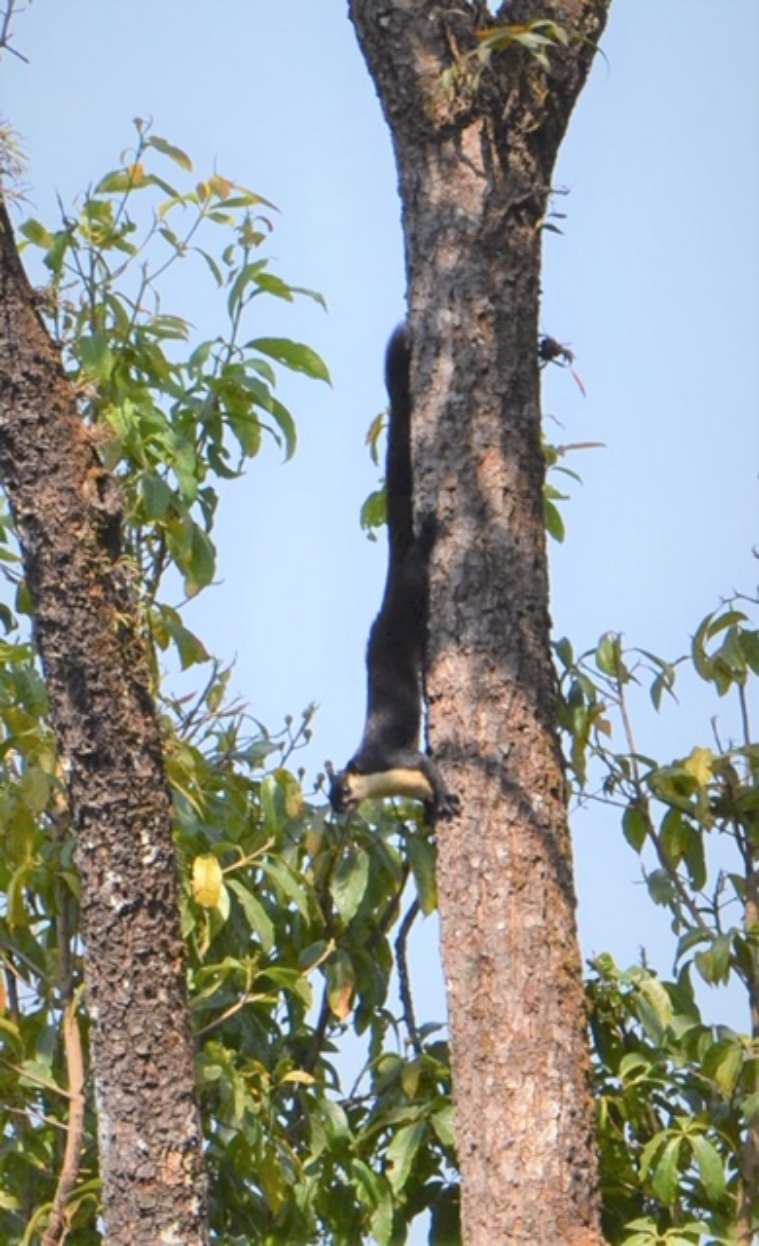- India
- International
First-ever study has grim prognosis: native squirrel could vanish from NE after 2050
The Malayan Giant Squirrel, one of the world's largest squirrel species that has a dark upper body, pale under parts, and a long, bushy tail, is currently found in parts of West Bengal, Sikkim, Assam, Arunachal Pradesh, Meghalaya, and Nagaland.
 Numbers of Malayan Giant Squirrel could decline by 90% by mid-century: (Source: ZSI)
Numbers of Malayan Giant Squirrel could decline by 90% by mid-century: (Source: ZSI)A large tree squirrel that is considered to be a “forest health indicator species” is disappearing, and may by the middle of this century no be longer found in the forests of India’s Northeast to which it is native.
A first-of-its-kind study by the Zoological Survey of India (ZSI) under the Union Ministry of Environment, Forest and Climate Change, has projected that numbers of the Malayan Giant Squirrel (Ratufa bicolor) could decline by 90 per cent in India by 2050, and if urgent steps are not taken, the species could be extinct in the country in subsequent decades.
The Malayan Giant Squirrel, one of the world’s largest squirrel species that has a dark upper body, pale under parts, and a long, bushy tail, is currently found in parts of West Bengal, Sikkim, Assam, Arunachal Pradesh, Meghalaya, and Nagaland. Destruction of its habitat could restrict the squirrel to only southern Sikkim and North Bengal by 2050, according to the ZSI.
 India is home to three giant squirrel species. (Source: ZSI)
India is home to three giant squirrel species. (Source: ZSI)
Only 43.38 per cent of the squirrel’s original habitat in India is now favourable to it, says the study; by 2050, the favourable zone could shrink to 2.94 per cent of the area the species was meant to inhabit.
“We hadn’t studied giant squirrels comprehensively in this country so far. When we carried out this study, we realised that the Malayan Giant Squirrel was fast losing its territory to human settlements and crop cultivation,” ZSI Director Dr Kailash Chandra said.

India is home to three giant squirrel species; the other two – Indian Giant Squirrel and Grizzled Giant Squirrel – are found in peninsular India. “If the government does not come up with a conservation management plan for the Malayan Giant Squirrel quickly, we may lose the species altogether in India,’’ Dr Chandra said.
Unlike the nocturnal flying squirrels, giant squirrels are diurnal, but arboreal (tree-dwelling) and herbivorous like the flying squirrels. The ZSI study says the health of the species is critical because it indicates the health of the forests it inhabits.
“The population of the species also indicates to us the health of the forest, of the vegetation and plants in the forest on which the species feeds, as well as that of the other symbiotic species that inhabit the region,’’ Dr Chandra said.
 The ZSI study says the health of the species is critical because it indicates the health of the forests it inhabits. (Source: ZSI)
The ZSI study says the health of the species is critical because it indicates the health of the forests it inhabits. (Source: ZSI)
The Malayan Giant Squirrel is also distributed through Southern China, Thailand, Laos, Vietnam, Burma, the Malayan Peninsula, Sumatra, and Java. It is found mostly in evergreen and semi-evergreen forests, from plains to hills at elevations of 50 m to 1,500 m above sea level.
In India, some 20% of the population of the species is found at elevations between 1,500 m and 2,700 m; the rest live in the plains and up to 1,500 m.
Of the roughly 1.84 lakh sq km of the squirrel’s range in Asia, about 8.5 per cent (15,635 sq km) is in India. The species is listed as Near Threatened on IUCN’s 2016 list, and it is protected under India’s Wildlife Protection Act.
The population of the squirrel in India declined by 30 per cent over the last two decades. While the forest area in the Northeast increased by 7,172 sq km from 1987 to 2013, the region lost 628 sq km of forests over the two years that followed.
According to the study, the Malayan Giant Squirrel and its habitat are under threat from deforestation, fragmentation of forests, crop cultivation and over-harvesting of food, illegal trade in wildlife, and hunting for consumption. Slash-and-burn jhum cultivation in many areas of the Northeast contribute to destruction of its habitat.
May 05: Latest News
- 01
- 02
- 03
- 04
- 05





































